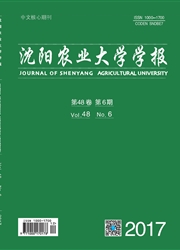

 中文摘要:
中文摘要:
在“理想株型与优势利用相结合”育种理论指导下,亚种间杂交为中国北方粳型超级稻增产做出了巨大贡献。以中国北方栽培粳稻品种为试材,利用籼粳特异性标记Indel与SSILP分析了不同年代与地区北方粳稻品种的籼型血缘的相对含量.结果表明,20世纪90年代以后育成品种籼型基因型频率显著增加。相关分析表明,籼稻血缘含量与每穗粒数存在显著的正相关性,与有效穗数存在显著的负相关性。进一步对籼粳杂交育成品种的8个产量与品质相关基因进行检测发现,育种家通过“选择”将控制穗粒数与粒重的籼稻增产基因GNla、GS3部分固定于北方粳稻基因组中,淘汰了适口性差的籼稻高直链淀粉基因Waxy以及不符合北方农民收获习惯的籼稻落粒基因qSHl,同时保留了北方粳稻原有的理想株型基因DEPl,宽粒基因qSW5。本研究进一步明确了“籼粳杂交优势利用理论”的分子基础。
 英文摘要:
英文摘要:
Hybridization of indica and japonica rice and utilization of an ideal plant type have enabled development of high- yielding japonica rice in northern China. We analyzed the genomic pedigree of indica-japonica hybrids grown in northeastern China from 1963 to 2008. Genome-wide analysis with subspecies-specific indel and SSILP markers showed indica-genotype frequencies were significantly higher in cultivars bred after 1990, and were significantly positively correlated with spikelet number per panicle and significantly negatively correlated with panicle number per plant. Among eight genes controlling agronotnic traits, the GNIa and GS3 genes were partly fixed in the northern japonica rice genome. In contrast, Waxy and qSHI were eliminated, whereas the DEPI and qSW5 genes were retained. This research defined further molecular basis of hybridization of indica and japonica rice.
 同期刊论文项目
同期刊论文项目
 同项目期刊论文
同项目期刊论文
 期刊信息
期刊信息
